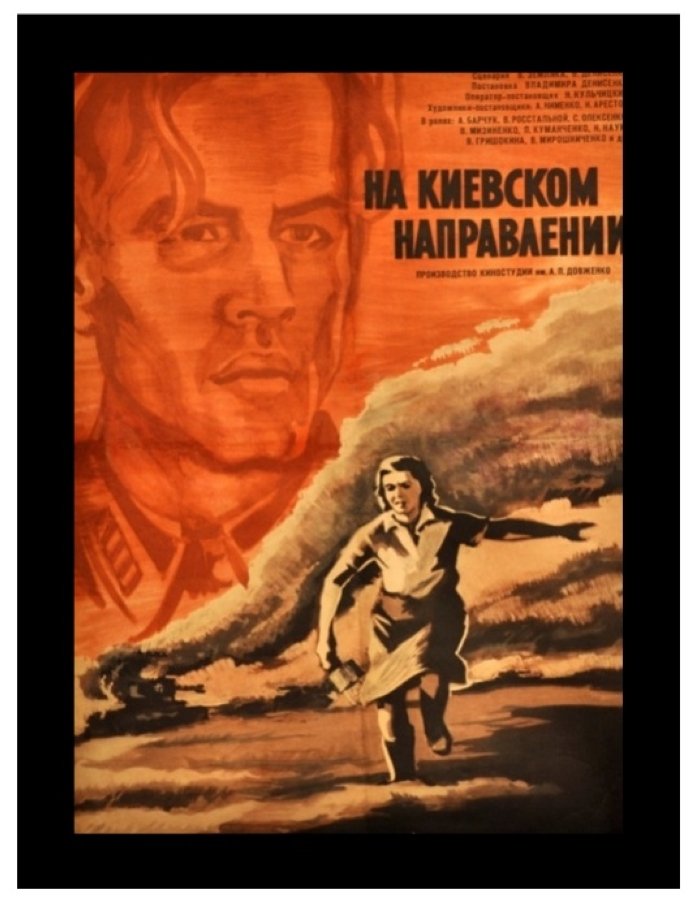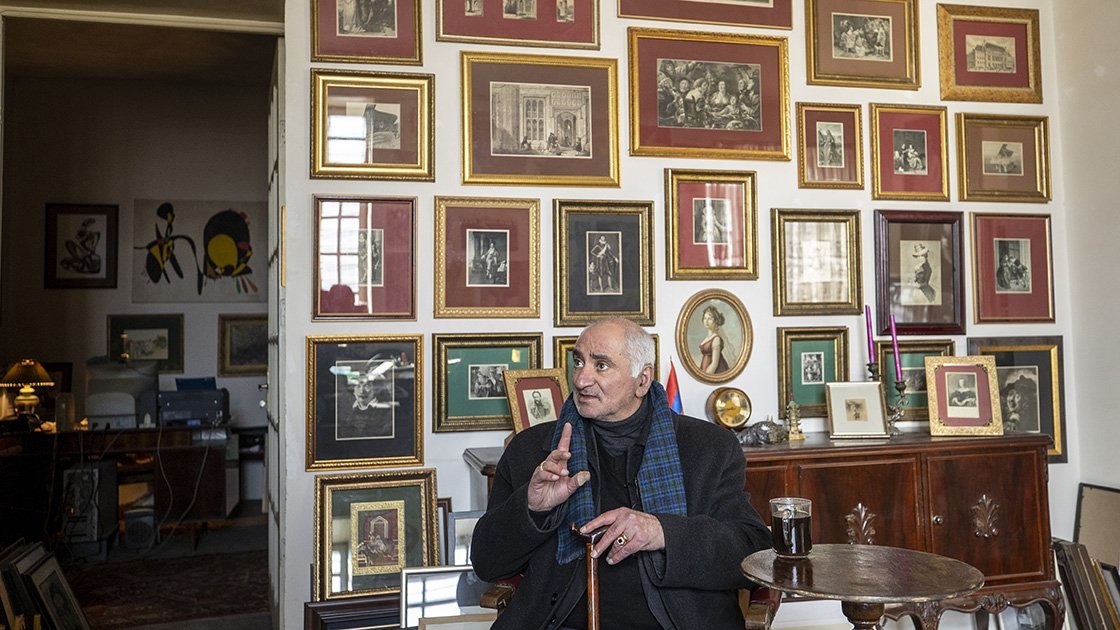© Turkuvaz Haberleşme ve Yayıncılık 2025
Armenia's second-largest city Gyumri, located on the Turkish border, has been known as the region's cultural hub since Soviet times. Among the many art galleries and museums in the nation’s cultural capital, Artush Mkrtchyan’s gallery stands out with its unique graphics, posters, paintings and Soviet household glassware.

The story of Mkrtchyan, 63, owner of the Style Art Gallery, though, is as interesting as the artworks exhibited in the two-story building. Explaining how he decided to launch an art gallery, Mkrtchyan said he used to own a textile cooperative business, operating both in Armenia and abroad, decades ago, before the collapse of the Soviet Union in 1991. "We made a lot of money and we had to spend it," he said, explaining that the currency was quickly depreciating due to the Soviet collapse.
Mkrtchyan studied at the Fine Arts Faculty in Tbilisi, Georgia's capital, and was interested in painting, so he decided to invest the money in the arts. "We had the opportunity to put together this collection," he continued. "And with the artworks in our collection, we launched the first Armenian exhibition in the Russian Art Museum on March 8, 1991," he recalled.
Boasting around 11,000 graphics, posters, glasswork and paintings, Mkrtchyan decided to launch a gallery to preserve them. The gallery currently attracts many visitors from both Armenia and abroad, including from neighboring Turkey, especially during the summer. Graphic works, mostly coming from Armenian artists as well as Russian and European ones, are on display.
"This is the most unique graphic museum from Moscow to the Near East," Mkrtchyan stressed. "Our collection has around 1,200 paintings. Artworks from 14 countries, including Armenia, are currently on display," he explained.
When asked where he is from, Mkrtchyan said he was born and raised in Gyumri, but his grandfathers, who were millers, came from Muş, in eastern Turkey. "I have been to Muş and Sason (a district in Turkey's Batman province) many times," he said, remembering the times past when the Turkish-Armenian border was open.
Adding that he lived very close to the train station, he said he remembers trains bringing people coming and going from Istanbul two or three times a week. "Some Turks were coming here on Fridays and going back to work on Mondays," he recalled.
Although he never had the opportunity to travel to Turkey by train, he said he took flights from the capital Yerevan to Istanbul around 20-30 times before they were suspended for two years, and now just recently restarted this month. "But my relatives would travel to Turkey by getting a visa from Moscow for three weeks," he said. "It was pretty easy," he added.
"Of course, there were some bureaucratic problems as well. But the border, in general, was free," he said.

Amid the recently started talks between Turkey and Armenia toward normalization, with the prospect of reopening the borders on the table, he said, "A closed border has never benefited any country."
"There may be conflicts, tensions. May God not let us go through the same things again," he said. "Diplomatic relations, open borders, these are necessary for all countries," he urged.
He said that he often saw how Armenians brought goods from Istanbul by train and sold them in Gyumri. "During the Soviet era, all Armenian products, except food, were very popular in Turkey. Boxes of socks and the like were taken to Turkey from here," he added.
"When Armenians and Turks share bread, it can give a different energy to their relationship. Things like cursing or hitting each other won't happen anymore," he said. "There is a woman in her 40s or 50s, the owner of a restaurant in Kars. Its goose meat is very famous in Turkey and Europe. So when the borders are opened, I will take a train and go there to eat that goose," he added.
